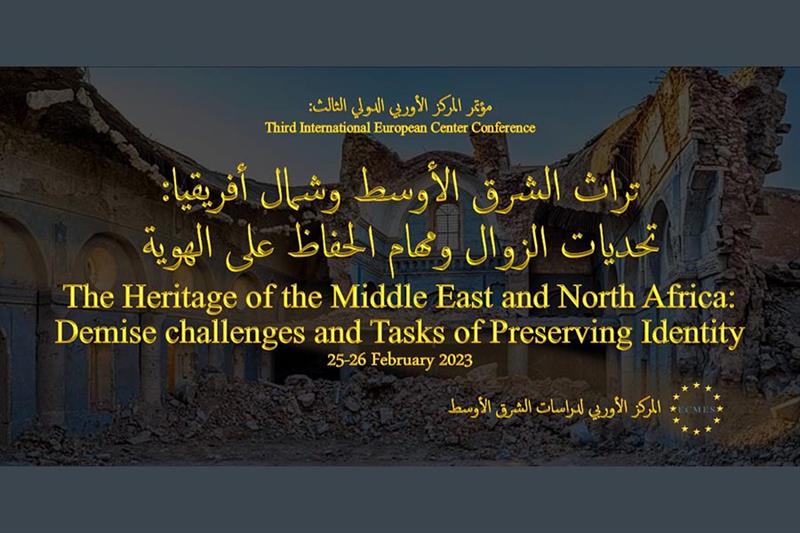The European Centre for Middle East Studies, headquartered in Germany, is organising its third international scientific conference in Tunisia on 25-26 February.
The conference will be held under the title “The Heritage of the Middle East and North Africa: Demise Challenges and Tasks of Preserving Identity.”
Representatives of UNESCO, ICESCO and ALECSO organisations are set to attend the conference.
Sattar Jabbar Rahman, founder and CEO of the European Centre for Middle East Studies and head of the conference, told Ahram Online the conference is meant to not only shed light on heritage but also to find mechanisms to protect it.
He pointed out that heritage, in its tangible and intangible forms, is suffering from neglect. The responsibility of protecting heritage lies not only on the shoulders of official institutions concerned with culture and heritage, but also on organisations concerned with protecting heritage, activists, and research centres, including the European Centre for Middle East Studies, he added.
Rahman confirmed that the heritage of the Middle East and North Africa is under threat, which is why the conference devoted five axes to discuss ways to protect it. These axes are: the impact of struggles and armed conflicts on tangible heritage; the role of civil society and cultural institutions in protecting heritage; national and international legislation to protect heritage; digitisation in the service and preservation of cultural heritage; and the impact of urban expansion on heritage.
Armed conflicts have caused some of the worst disasters on the cultural, urban and architectural fronts, said Hala Asslan, an expert with the International Council on Monuments and Sites and UNESCO and vice chairman of the Scientific Committee at the conference.
Asslan told Ahram Online that several conflicts erupted during the first two decades of the third millennium, causing unprecedented destruction in the region and harming the cultural, architectural, and environmental heritage of several Arab countries, especially those located in the Middle East and North Africa (MENA) region, most notably in Iraq, Syria, Yemen, Lebanon, and Libya. Several sites registered on the World Heritage List were damaged, such as the ancient city of Aleppo, the archaeological site of Palmyra, and the villages of Forgotten Cities in northern Syria, she added.
Chokri Essifi, a researcher in historical and civilisational studies and coordinator of the Office of Academic Relations at the European Centre for Middle East Studies in Germany, told Ahram Online that the local heritage in the Middle East is exposed to several internal and external threats. The most prominent of these is the lack of maintenance, attention, and follow up, their inappropriate use in cultural and tourism development, and the lack of awareness of the importance of this heritage in building national cultural identity.
With regard to external influences on heritage, Essifi revealed that the rapid transformations that the world has been witnessing since the 1990s included a number of influences in the heritage of the Middle East.
The first of these is the continuous attempts to own this heritage. This is in addition to the increase in theft, especially during periods of wars and conflicts that weakened protection measures on heritage and cultural sites.
He stressed that despite the positive aspects of globalisation, the unilateral view in the field of culture and the growing imperialism and one-centric tendency have hindered the trend towards promoting constructive cultural pluralism that does not differentiate between cultures and identities.
source/content: english.ahram.org.eg (headline edited)
\____________

___________________________________________
MIDDLE EAST & NORTH AFRICA (MENA)